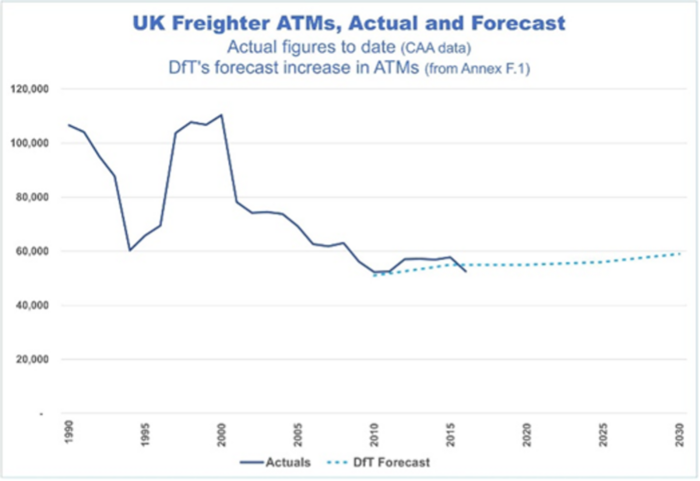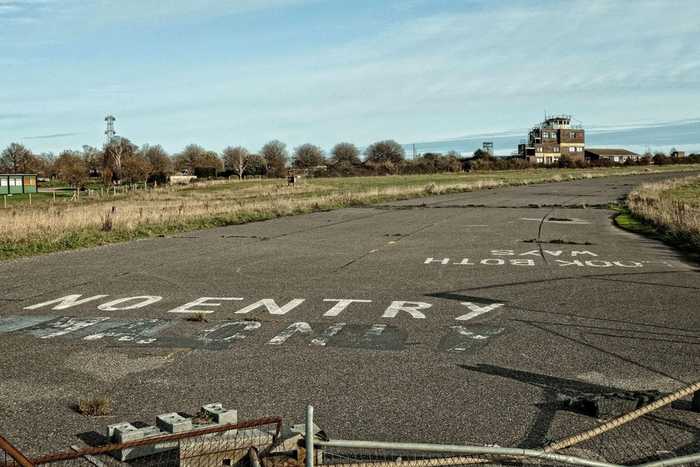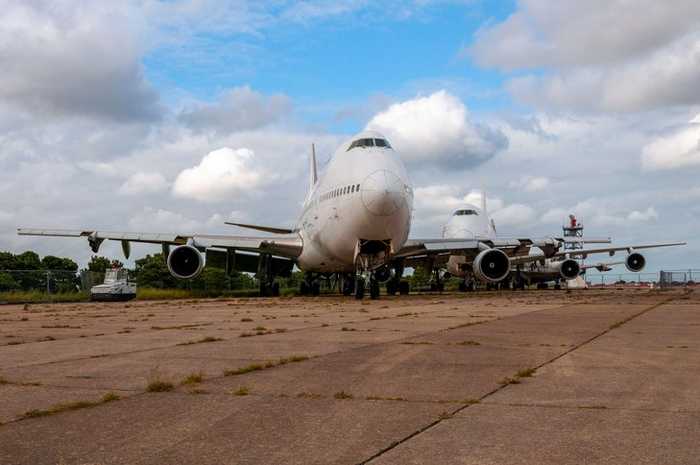Always Jam Tomorrow: There's no credible economic or environmental case for the proposed cargo hub at Manston.
There is no credible economic or environmental case for the proposed cargo airport at Manston. Another job-creating, environmentally friendly vision for the space is possible; one that will create far more jobs that any cargo airport. We must be bold enough to believe in a different vision and say so.
Let me tell you how I get to my position:
Firstly, people don’t come to Thanet or any part of north-east Kent by accident; you are never passing through on the way to somewhere else; we are not a logistically well-placed part of the UK, as you could argue for example the East Midlands, where there is cargo capacity and all the infrastructure in place or even Stanstead and Southend, might be. Is there really a demand – given the high price of fuel – by importers, to bring their goods to an airport where onwards road-based costs will be higher than they would be if the same goods were flown into elsewhere in Britain for onwards distribution? Think of all those increased queues for the Dartford crossing. Think of all the fuel costings increasing as cargo gets trapped on the M25. Is flying into Manston a good financial option for onwards distributers? I doubt it. The recent months which have seen soaring fuel costs, have shown how precarious any former business model for an East Kent cargo hub must be, especially considering that since Heathrow decided to expand their bellyhold freight operations (around 2001) to offset the high costs of passenger freight, they are unlikely to relinquish a stake in the market. As you can see my the graph below, there isn’t a huge projected increase in cargo air traffic management (ATM) over the next 10 years either.

Given that three different iterations of ‘airport’ have failed before in the same location, you might be reminded of the adage ‘Fool me once, shame on you; fool me twice, shame on me’. The quote doesn’t expand as to the feeling of foolishness that a 4th potential failure would engender, but given the unstable economic market right now, fools we might all become if the current air cargo hub model progresses.
Secondly, we must consider the borrowing costs that are projected to develop the site to be a cargo airport. There is an identified £500m start-up cost will be needed, which the current owners say they can raise, but as of today, there’s nothing but hot air in the bank! Is such huge private sector funding likely in the current climate? Given the sky-high inflation rates, especially the hugely inflated cost of raw materials from the point at which the £500m figure was first floated, these cannot with any sense of realism, be the projected start-up costs now. Tony Freudmann, of RiverOak Strategic Partners (RSP) says that even given macroeconomic trends, his investors are still keen on the project and indeed it might be so that those who invest in infrastructure are long-term (30 year+) investors, but investors need profits and suppose, even conservatively thinking, that a £500m start-up cost has now inflated to £600m start-up, how many years – realistically – would a cargo hub, adhering to conditions, take to break even anyway? And who are the named people with financial interest for RSP and their subsidiaries anyway? Most of those named seem to be Switzerland-based ‘fiduciary’ specialists with Helix who specialise in ‘offshore company work’; the root investors behind those Helix names remain...nameless.
Now we turn to the potential economic benefits to the area (and by that, I mean both direct job creation and supply-chain jobs created to service a functioning air cargo hub. Ramsgate County Councillor Karen Constantine has written in depth and eloquently about this issue – and many other issues which I have found hugely useful in coming to my position – here. The data surrounding job creation has never been forthcoming and the figures mooted on social media range from 150-500 jobs created on site (even though the proposals are to automate as much as possible and to plan for remote air traffic control. I am still unconvinced that these would be (let’s pick a figure in the middle of that range) 300 full-time, permanent contract jobs. It might be worth noting, that even at its zenith, the previous iteration of Manston airport only directly employed 200 people. When it last closed in 2014, 144 jobs were lost. As for supply-chain creation; yes, of course this could be exciting, but for others to invest in moving their business, or starting a new business to be part of the procurement model for an airport, they’d have to be sure of its long-term survival, which given the inflated start-up costs (and thus debt) look far less certain than they did say only a year ago. RSP have, when discussing the creation of local jobs, defined ‘local’ as within 90 miles – this could include places as far away as St. Albans, Worthing and Guildford. This doesn’t feel very ‘East Kent’ to me. For further discussion of this see here.
Of course, I’m all for job creation and skills development in East Kent – this area desperately needs it. If Manston is ever going to be the economic boon for the area however, it won’t be under the disguise of an air cargo hub: that’s just jam for a tomorrow that never seems to arrive; the development of Manston as a mixed-use business/residential space, possibly using legislation creating low-tax investment zones, to bring a real mix of skills, creativity, housing, distribution hubs, green tech, start-ups and UK business expansions etc to the area is exciting. The economic benefits to the area of another vision are far more rewarding: we need to be shouting louder about this. Many people have done so. I will be.

Now, finally, but no less importantly, let’s look at why any East Kent airport is an environmental disaster. We have are in the Climate Change Emergency era; we shouldn’t – as a country – be opening new airports given their emissions, particulate pollution, the trucking in and out of aviation fuel, anti-freeze run off etc; I’m very happy to revisit this simple but environmentally sound position when sustainable batteries are developed for cargo and commercial flights. Come back to me on this then, although we might be waiting a while.
Aircraft produce Nitrous Oxide (NOx) and other particulate matter. There are studies that have identified airport-derived emissions 20 miles away from the end of runways. For those communities at the end of a runway (Ramsgate), there is evidence that long-term exposure to the high levels of air pollution that such an airport siting brings, increased risk to residents of heart diseases, asthma, strokes, lung diseases and other life-limiting illnesses. Particulates also cross the placenta. Just a small deviation increase in daily pollution levels leads to a marked increase in hospitalisations in areas within 10 kilometres of an airport. I don’t think QEQM needs these extra pressures; point me in the direction of anyone who does.
Air freight often planes that are older stock than passenger craft: the planes used in freight are often more polluting and more noise emitting than their commercial passenger cousins. These planes also cause more carbon emissions per tonne/per kilometre of freight shipped than carrying the same cargo by train or ship.
For those who live locally, it is also worth knowing that about a third of Thanet’s water comes from the drinking water aquifer below Manston. Also under Manston are reputed tunnels and possibly buried WW2 equipment, including possible toxins, covered and left when the base was decommissioned. Other run-off water from the runway and hardstanding at Manston has found itself being piped into the SSSI at Pegwell Bay, with protected bird, flora & fauna populations existing alongside the growing seal colonies.
Of course, I could add into this article much more on noise pollution, quality-of-life impact and projected property price reduction on the flight path (just at a time when mortgage rates are higher than they have been for decades – negative equity is a real possibility for buyers). Others have written eloquently on these subjects, and they rightly remain matters of unresolved concern for the local people of Thanet. It is worth pointing out that numerous (see here, here, here) scientific investigations have linked loud aircraft overhead noises with impaired children’s reading ability and long-term memory. If I were Kent County Council (KCC), with a mind to the Health and Social Care Act of 2012 and my obligation to reduce inequalities in health, I would be looking at the huge inequalities and deprivation already existing in Thanet and wondering if a new airport might just exacerbate a downturn in health outcomes for an area already struggling. This would make sense for KCC to consider, given there has already been questioning at County Hall about the low amount allocated for noise mitigation in schools under the proposed flight path.
Just a final note on noise pollution: Freudmann and RSP more generally are (ironically) silent on noise mitigation for those living and being educated under the flight path. The costs for such mitigations will be many, many millions. RSP and the company’s subsidiaries have yet has yet to bring forward any noise mitigation plan. Even when they do: Thanet residents must continue to be able to enjoy and benefit from being outside. Thanet has a disproportionately older population than most of the UK, many residents enjoy their gardens or balconies but some rarely venue further, especially since the pandemic. Consideration of the particular vulnerabilities of Thanet’s population and the impact aircraft noise will have on them and their right and ability to enjoy outside space, has not been done in any meaningful sense.

The remarkable Ramsgate and Herne Bay residents who have come together to oppose the new airport have worked tirelessly. I will be watching for notifications on the oral hearing to allow for the application of a second judicial review with great interest. We must be committed to meaningful and significant action on climate change and that does not include a new financially unviable airport, where run-off is a likely key polluter of our sites of special scientific interest, the local water table faces cross-contamination, noise pollution will affect lives domestically and biologically and air pollution remains one of the key factors on reducing overall life-expectancy across the world, including here in the UK.
Donations to support Jenny Dawes and her team in getting through the oral hearing and a hopeful JR can be made here .
Posted on February 10th 2023

